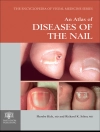Inhoudsopgave
Epidemiologic and Health Costs of Incontinence.- Epidemiology of Urinary Incontinence.- Epidemiology of Faecal Incontinence: A Review of Population-Based Studies.- Economic Costs of Urinary Incontinence in Germany.- Perception of Incontinence in and by Society.- Pelvic Anatomy, Physiology and Etiology of Incontinence.- The Rodent Animal Model to Explain Stress Urinary Incontinence.- Birth Trauma and Incontinence.- Neurogenic Urinary Incontinence.- Fecal Incontinence After Rectal and Perianal Surgery.- Diagnostic Methods to Detect Incontinence.- Evaluation of Anorectal and Pelvic Floor Muscle Function.- Imaging of the Pelvic Floor — Videoproctography and Dynamic MRI of the Pelvic Floor.- Diagnostic Methods to Detect Female Urinary Incontinence.- Conservative Therapy of Incontinence.- Pharmacological Treatment of Urinary Incontinence.- Medical, Behavioural and Minimally Invasive Therapy — A Urologist’s View.- Medical and Behavioral Treatment of Fecal Incontinence.- Operative Therapy of Urinary Incontinence.- Innovative and Minimally Invasive Treatment of Stress Urinary Incontinence.- Abdominal, Vaginal or Laparoscopic Approach for Urinary Incontinence?.- Diagnostic and Surgical Management of Stress Urinary Incontinence.- The Artificial Urinary Sphincter.- Operative Therapy of Fecal Incontinence.- Sphincteroplasty.- Dynamic Graciloplasty.- The Artificial Bowel Sphincter in the Treatment of Severe Fecal Incontinence in Adults.- Innovations in Fecal Incontinence: Sacral Nerve Stimulation.- Stoma Surgery.- Postoperative Care of Patients After Pelvic Operations.- Postoperative Management After Surgery for Incontinence and Prolapse.- Postoperative Management of Urinary Incontinence After Urologic Surgery.- Incontinence Treatment after Rectal or Perianal Surgery.- Qualityof Life and Long-term Results After Incontinence Treatment.- Quality of Life with Urinary and Fecal Incontinence.- Long-term Results After Surgery for Urinary Incontinence.- Long-term Results of Surgery for Stress Urinary Incontinence — A Urologist’s View.- Long-term Results After Fecal Incontinence Surgery.- Quality of Life with a Permanent Colostomy.- How Can We Improve the Treatment of Incontinence?.- Is Urinary or Fecal Incontinence a Preventable Event?.- Concept of the Pelvic Floor as a Unit: the Case for Multidisciplinary Pelvic Floor Centers.- On Asymmetry in Sphincters.- Functional Asymmetry of Pelvic Floor Innervation and Its Potential Role in the Pathogenesis of Fecal and Urinary Incontinence — Report from the EU-sponsored Research Project OASIS (On Asymmetry In Sphincters).












